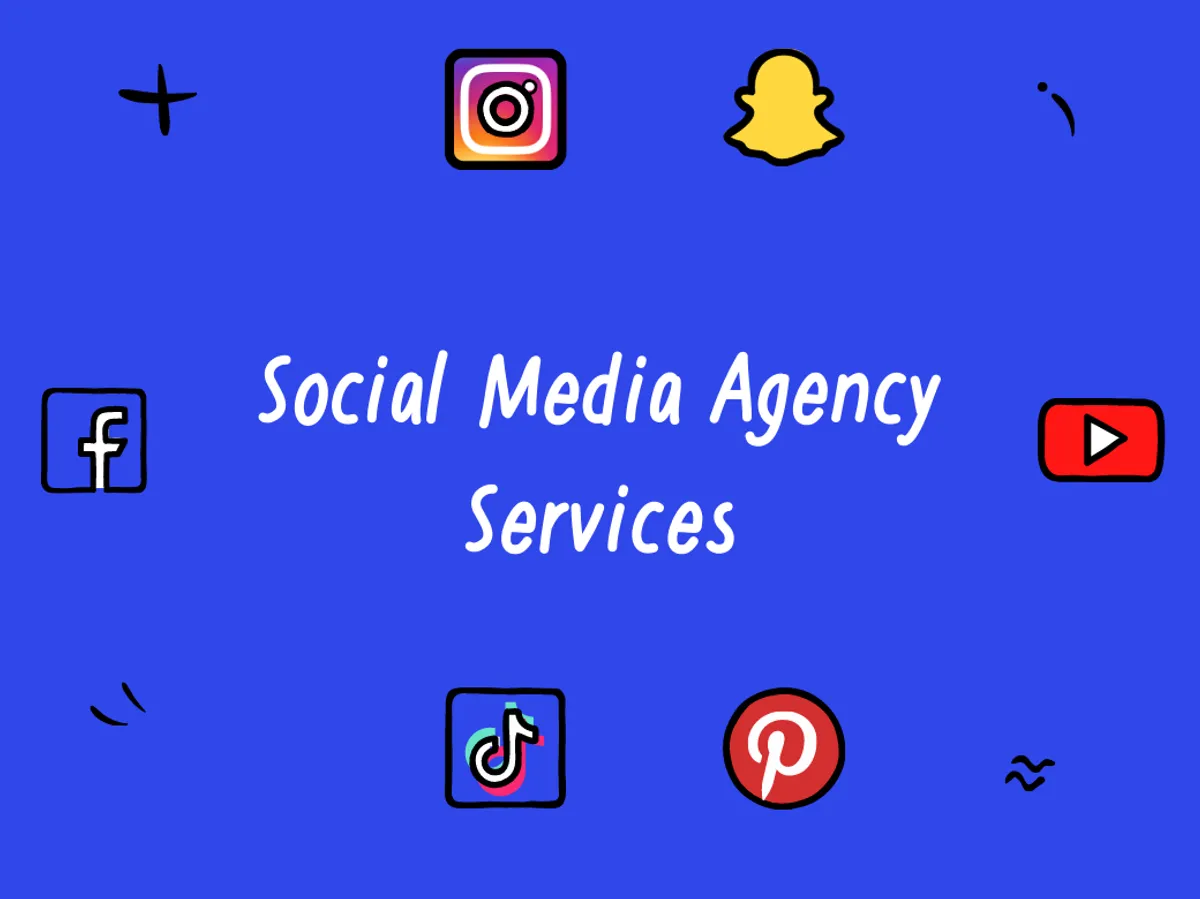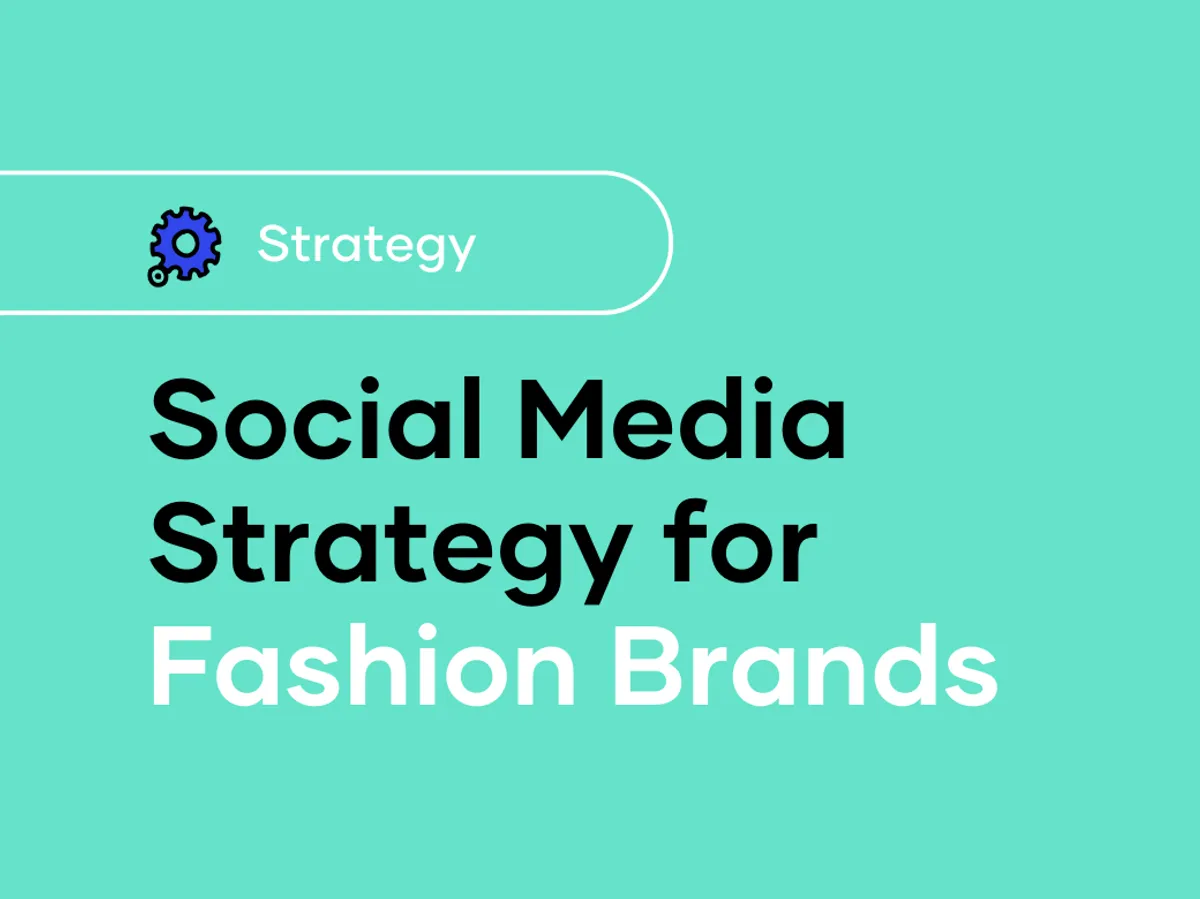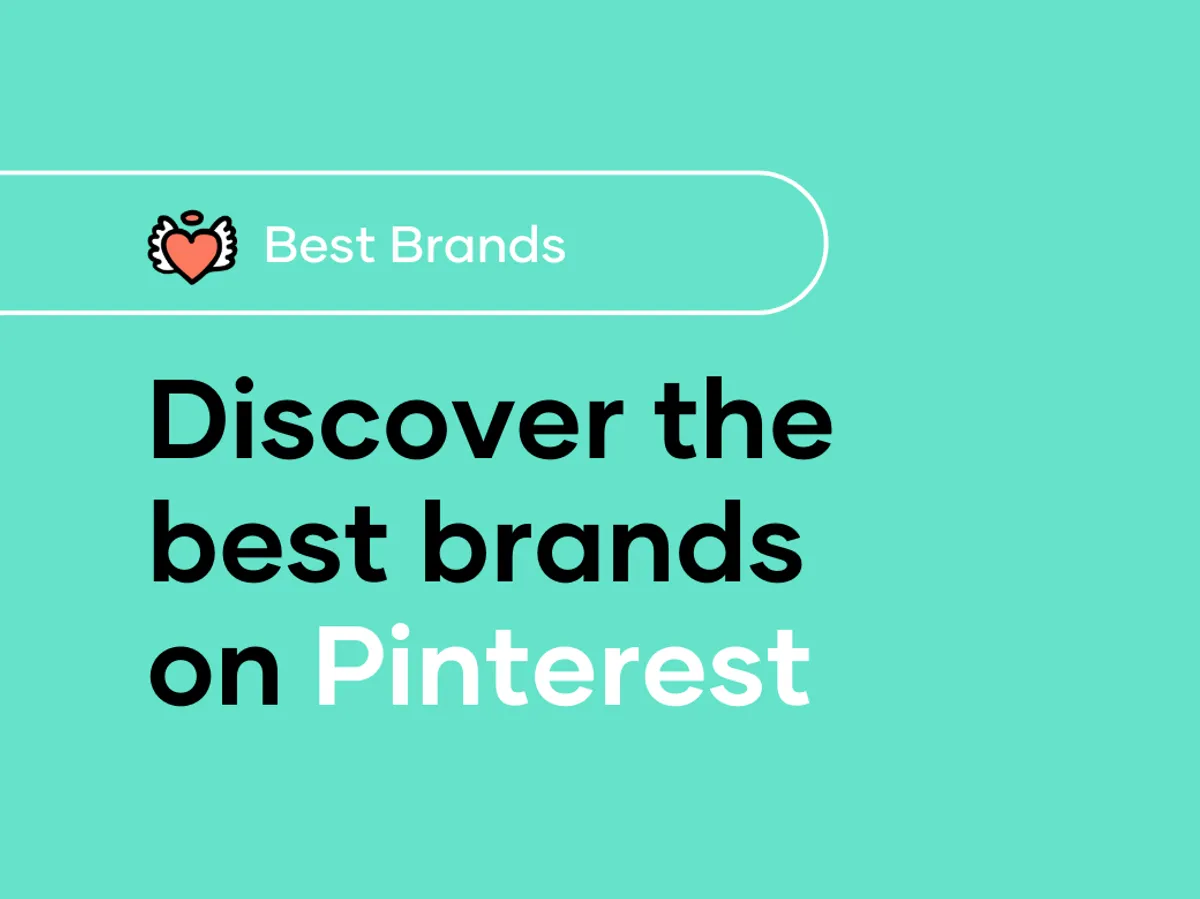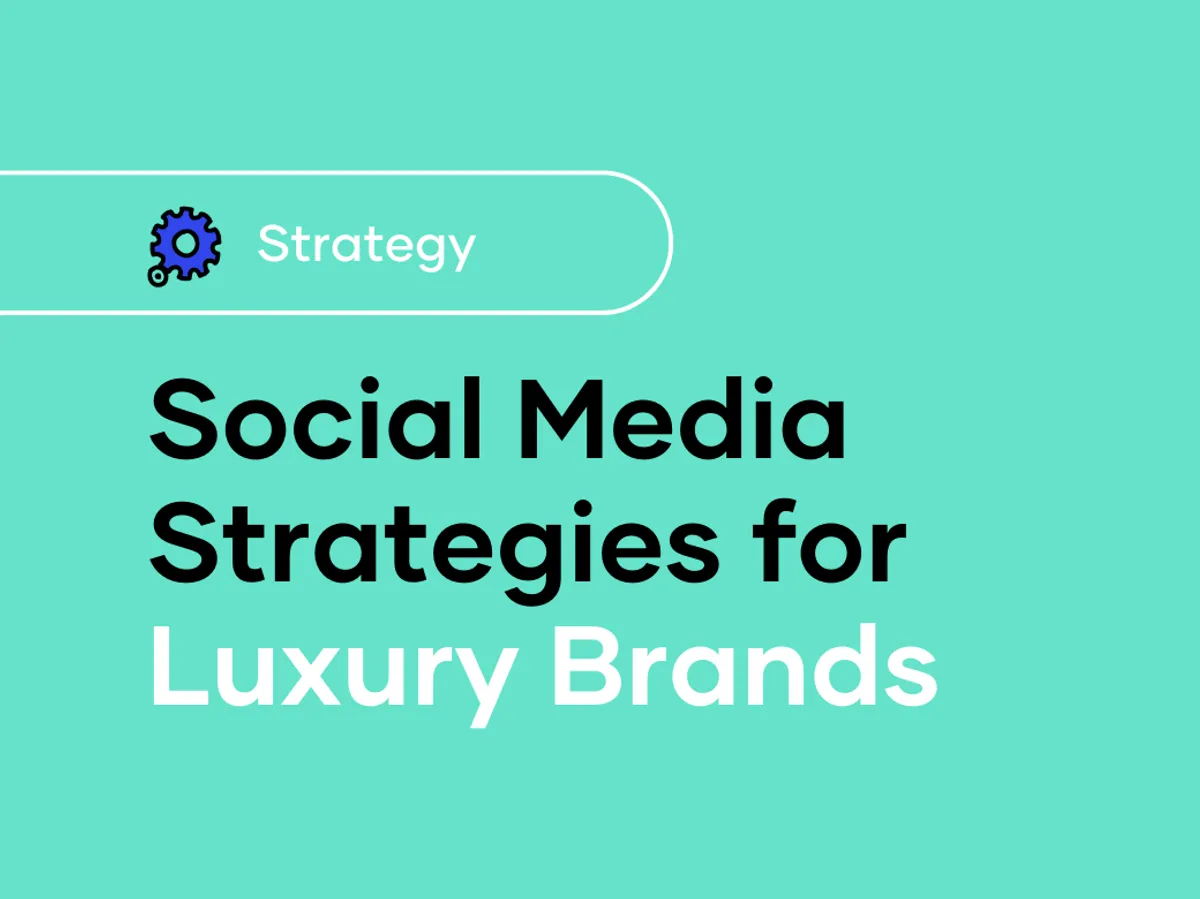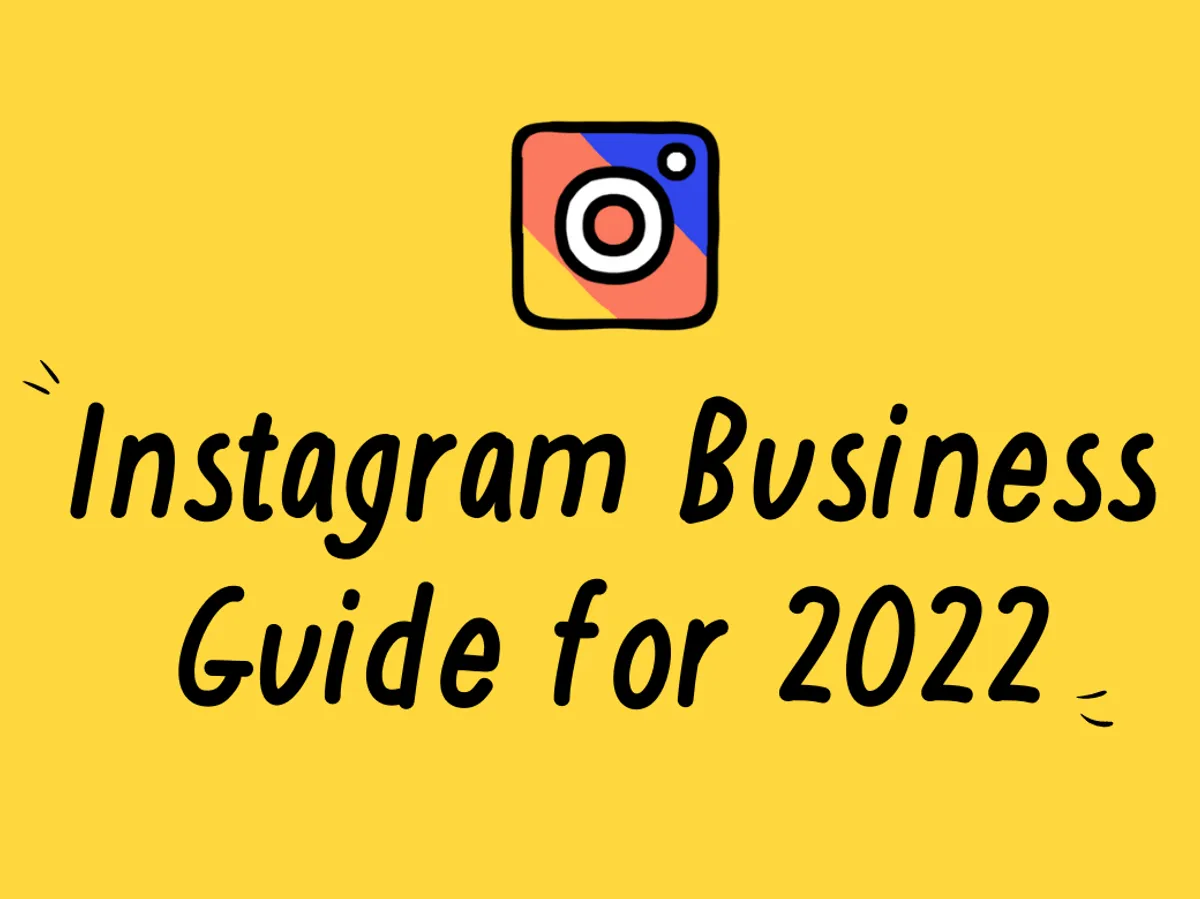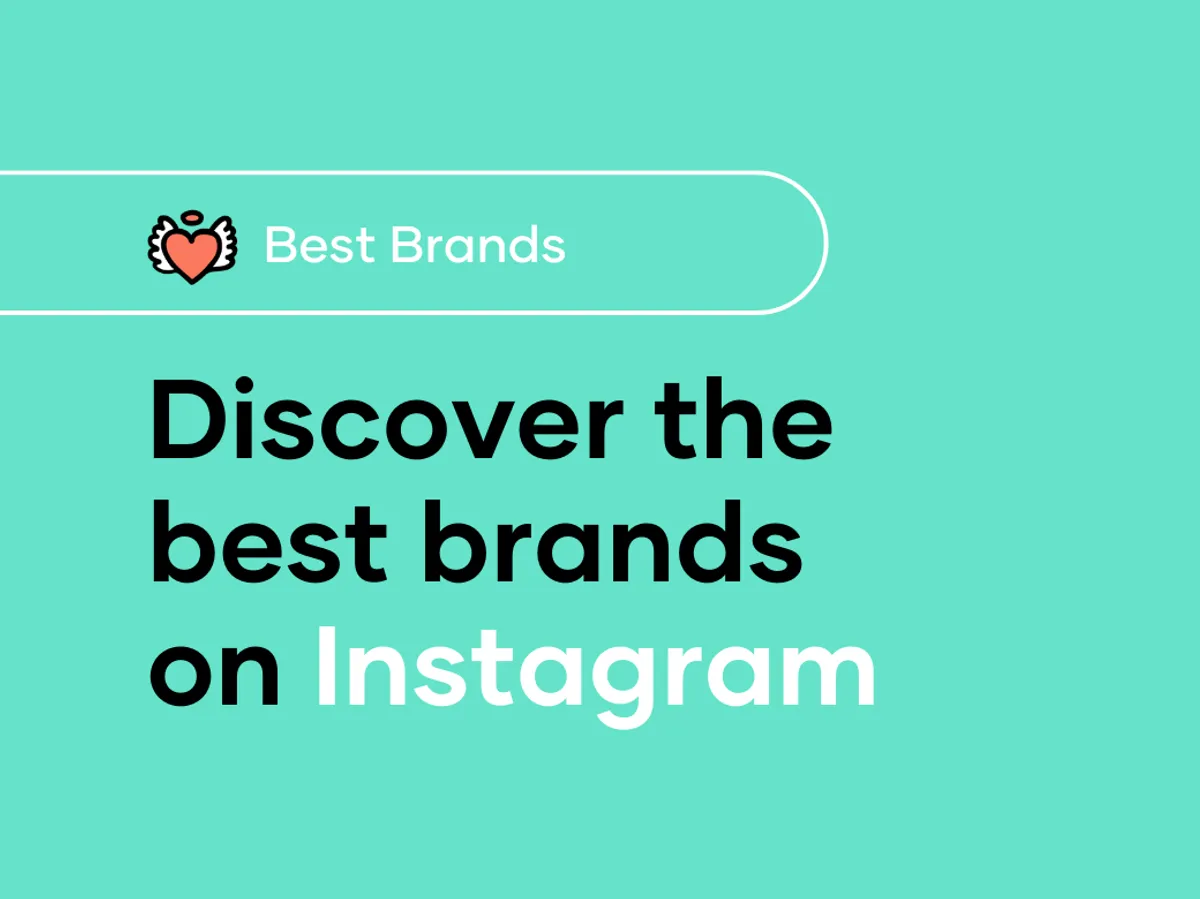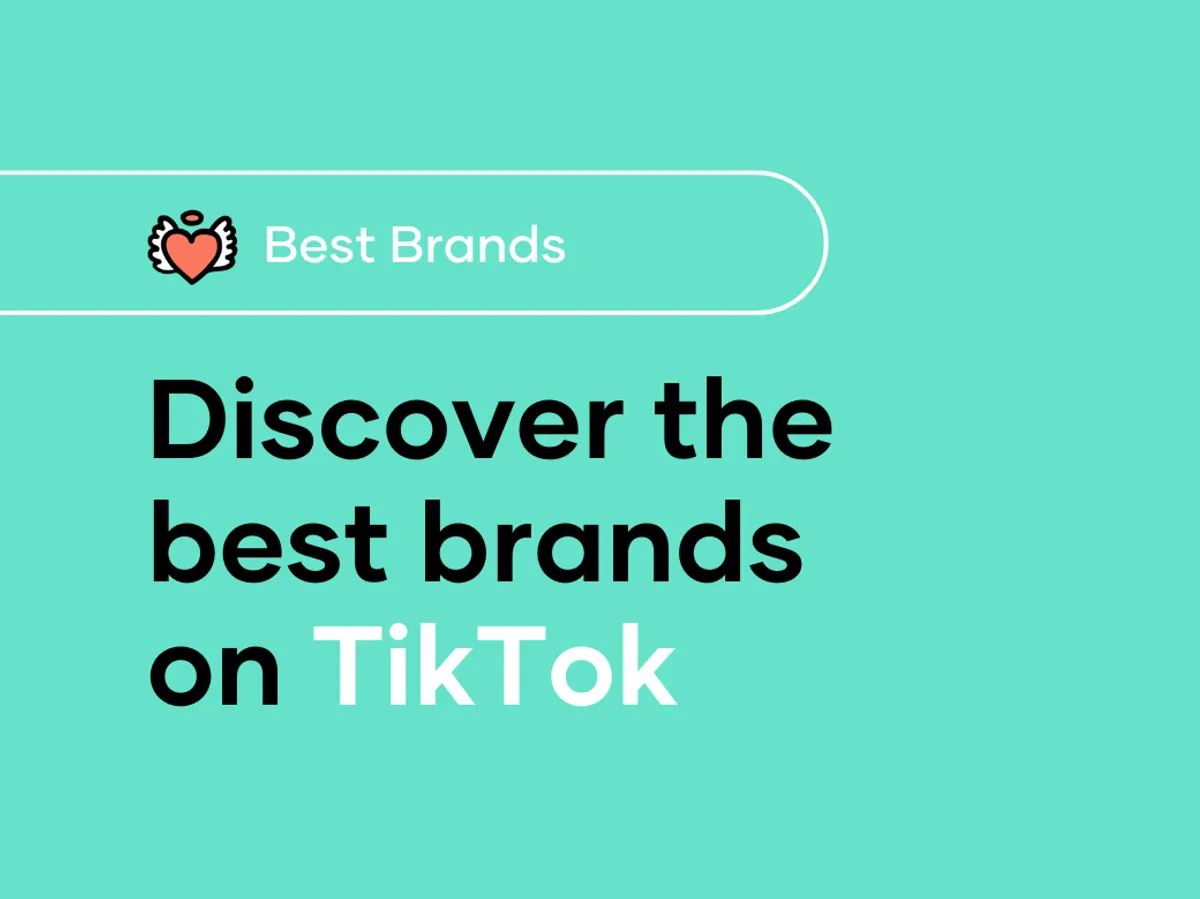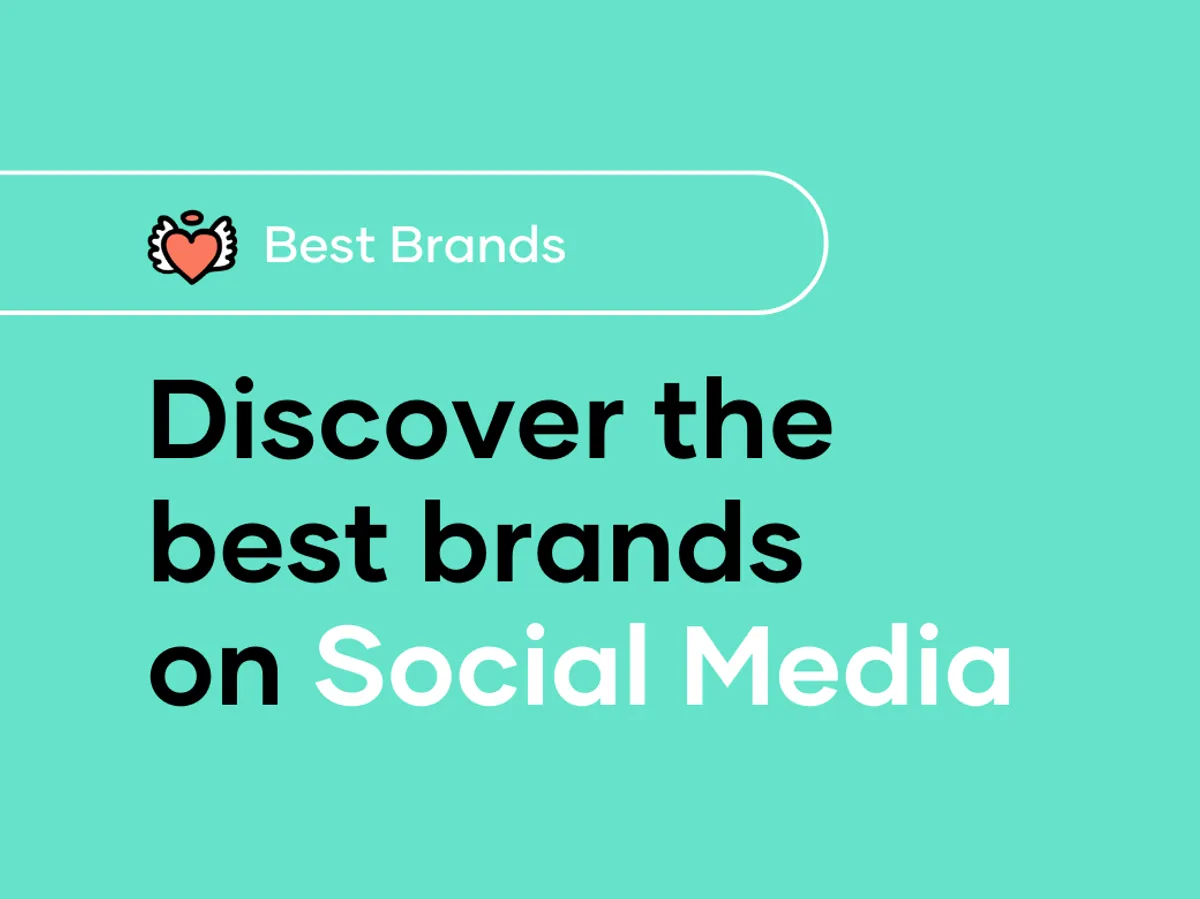7+ Social Media Strategies for eCommerce Brands That Work (with Examples)

Contents
When you’re looking for a way to increase sales for your online store, creating an eCommerce social media strategy is a no-brainer. You can tap into a captive audience of social media users looking for products your online store sells.
However, creating and implementing that strategy successfully can feel daunting. That’s why we’re here to help.
This guide is filled with tips, examples, and a step-by-step guide to creating an eCommerce social media strategy that gets the results you’re looking for. Ready? Let’s start strategising.
Stay up to date
Why is social media important for eCommerce brands?
Before we dive into the how-to, let’s talk about why exactly social media is the “Insta” to eCommerce’s “gram”.
Online shopping is continuously growing in popularity, and it’s not going anywhere anytime soon, with social media making it easier for customers to find and buy your products. A third of young people in the UK have purchased social media.
Not only that, but people are also starting to use social media as a way to search for products. Nearly 50% of Gen Z and millennial shoppers prefer to find new products on social media over search engines. Plus, a whopping 70% of consumers search for products they want to buy on Instagram and Facebook.
Many industries lean on social media for brand awareness and customer engagement more than anything else. Still, when it comes to eCommerce, social media is key to increasing sales and conversions.
Excited to get started? We're going to walk you through an in-depth eight-step guide that will help you create a comprehensive eCommerce social media marketing strategy that could skyrocket your social media sales.
How to create an eCommerce social media strategy
1. Choose a platform
The first step in any marketing strategy is always pinpointing the platform(s) you will use. You don't want to throw spaghetti at the wall and see what sticks.
Instead, it would be best to think about your goals: brand awareness, customer engagement, and sales. The next piece to the puzzle is lifting the lid on what your target audience looks like and the platforms they're using.
We'll walk you through a few of the top platforms that tend to be ideal for eCommerce brands looking to sell on social media.
But remember that what works for some businesses doesn't work for others. Always look at your Google Analytics referral traffic report to find niche communities that drive traffic to your online store.
With nearly three billion monthly active users, Facebook is by far the most popular social network. The law of averages means you're likely to find several audiences to target on this platform.
Additionally, Facebook has a massive ads platform that helps you reach even wider audiences and put your products in front of new faces.
One of the best things about using Facebook for your eCommerce marketing strategy is adding products to your Facebook Shop, tagging them in your posts, and making sales all within the Facebook platform. Users don't have to leave the app.
Here's an example from Love Leggings. The call-to-action on its Facebook Page is "View shop", making it easy for interested customers to start shopping immediately.
Owned by Facebook (now Meta), Instagram is another great option for eCommerce brands looking to generate more revenue from social media.
Statistics show that 60% of people discover new products on Instagram—and you want yours to be found.
Instagram syncs with your Facebook Shop, making it seamless to showcase products on both of your profiles. Easily tag products in your posts, Reels, Stories, and more to make it as easy as possible for customers to purchase.
YouTube
Video marketing is a significant part of many eCommerce social media strategies. Showing your products in action, demonstrating various use cases, and creating lifestyle content that makes people desire your products are great tactics for your YouTube channel, mainly because YouTube is the number one platform that impacts consumer behaviour.
The best part? YouTube is considered the second-largest search engine on the web, behind only Google. Remember that you need to optimise your video content, titles, and descriptions to rank well and improve discoverability.
Pinterest is another search-engine-like platform where users love to shop. Eight out of 10 users have bought products based on a brand's Pinterest content.
Visually appealing content is the key to success on Pinterest. Take beautiful photography that helps your product stand out. Upload your product catalogue and create Buyable Pins to make it even easier for customers to check out and make a purchase.
TikTok
Another video platform, TikTok, ranks as the second-biggest app in consumer spending.
The platform is most popular with younger generations, with 10- to 19-year-olds accounting for a quarter of its user base. Twenty- to 29-year-olds follow close behind, at 22.4% and 30- to 39-year-olds make up 21.7% of TikTok's active users.
Short, engaging videos that showcase your products, the behind-the-scenes process, and the people behind the brand will win engagement on this platform.
2. Decide on your content formats
Now that you've got up to five platforms to test in your eCommerce social media strategy, let's talk content.
Your social media content is the bread and butter of your entire social media presence. This is what people will see as they scroll down your feeds—you want it to be eye-catching, engaging, and enticing.
Content will be the most significant part of your strategy, so pay close attention as we walk you through how to decide on the best content for your brand.
Step 1: Know what works on each platform
Each platform has its ideal content types, so it's best to start with just one or two if you don't have the resources to create content for five different platforms.
Video
Video content gets the highest engagement of any content on Facebook, meaning video should be a priority on this platform.
There are a few different types of video content you can share:
Facebook Stories
In-feed videos
Live videos
Use video content to share behind-the-scenes, promote products, relate to your audience, and more.
Text-only
While most Facebook posts you see have some creativity to accompany them, don't discount the power of text-only posts when engaging your audience.
Take a page out of Gymshark's book:
This witty one-liner garnered over 1,000 likes, 350 comments, and 175 shares. Text-only content lets you be a little more relatable and personable, as long as it's still 100% relevant to your industry and what you sell.
Tagged products
When you upload your product catalogue to your Facebook Shop, you're able to tag products in the photos you share. This helps people find products they love easily, earning you even more sales.
This post by Treaty Jewellery, for example, tags each featured product, so viewers only have to click once to find the product page and add it to the cart.
Feed posts
Feed posts are the most classic content type on Instagram. You'll likely spend most of your time here. You want anyone visiting your business' Instagram profile to see a library of recent content.
You want to make sure you create some theme for your content so it flows well—as we see below in this minimalistic brown, grey, and black theme from Hardgraft.
Like Hardgraft, your Instagram feed content might be nothing but stunning, high-quality product photos.
Or you might take inspiration from a brand like Beebombs and incorporate some user-generated content (UGC). We'll do a deeper dive into UGC a bit later, but, essentially, it's a great way to share more content without having to invest the resources in creating it.
As you can see in the caption, Beebombs tagged the original poster to give them proper credit for the photo.
Reels
Instagram Reels are a newer content format on Instagram, but they're a significant player if you want to grow your following. Reels are Instagram's version of TikTok: short one-minute or fewer videos that are bite-sized and engaging.
Here's a great example of Dowse store teasing the opening of its first brick-and-mortar store.
Video
Like Facebook, Instagram has a variety of video types:
In-feed videos
IGTV
Live videos
IGTV was Instagram’s attempt at letting creators share more long-form episodic content, but it still isn’t as popular as the other types of video.
Stories
Instagram Stories were the platform’s take on Snapchat Stories. These can be photos or videos, and they last on your profile for only 24 hours unless you save them to a highlight reel.
This is a great way to share less styled content than you would in your feed. Instagram also lets you create polls, ask questions, share quizzes, and more within your Stories.
Take a look at this example from Gymshark. It created polls to find out which is the most popular cheat-day meal.
YouTube
As a video hosting platform, the primary type of content you’ll need to create for YouTube is—no surprise here—videos!
There are three different types:
Channel videos. Upload any horizontal video to your channel. You can organise videos into playlists based on promotional videos, educational videos, and more.
Shorts. Short, engaging videos. YouTube’s version of TikTok's and Instagram Reels.
Stories. Disappearing videos. YouTube’s version of Instagram and Facebook Stories.
Normal pins
A Pin is a photo linking to a webpage. We see an example of one of these standard pins below. It has a photo, title, and description that leads to a product category on Love Leggings’ website.
This is an excellent example because the brand has uploaded a photo of its product out in the real world, even though that photo isn’t found on the product category page it is linked to.
It’s a smart tactic. This photo is much more engaging than some of its plain product photos. An image like this increases the chances that someone will save the image onto their own Pinterest boards, expanding its reach.
Shopping pins
Another type of pin is called a “rich pin.” There are a few different types of rich pins that share more information than a regular pin.
Your eCommerce business will be focusing on “shopping pins.”
Like we see in this example from Love Leggings, a shopping pin provides more specific product information, like price and product description.
Shopping pins also show up in the “Shop” search results, making it easier for someone in the purchasing mindset to find your product and buy it.
TikTok
Short videos
TikTok videos can be as short as 15 seconds or as long as three minutes.
This quick clip from nu-in uses a popular quick transition effect to show a woman changing into her nu-in clothing and getting ready for the day.
https://vm.tiktok.com/ZM8fTt8Dn/
Short, engaging videos like these are perfect for increasing brand awareness and customer engagement.
Long-form videos
Like the one we see below from Sweetpacks, long-form videos tend to be more informational or product-focused. This video shows the Sweetpacks team boxing up an order, a popular content format on TikTok.
https://vm.tiktok.com/ZM8fGwLvo/
This is a great way to showcase what Sweetpacks offers while engaging with customers—many of its “boxing” videos are by request from TikTok followers who have already made a purchase.
Step 2: Curation vs creation
Now that we’ve covered the various content types you’ll want to create for each platform, let’s dive into the different ways to distribute content.
Not every piece of content you share on your brand’s feeds will be new content you’ve created. It’s essential to balance unique content and “curated” content that is repurposed or reused.
Curated content can be anything from:
Photos are taken for your eCommerce website that you share on social media
TV adverts you upload to Facebook
User-generated content that you ask permission to share on your feeds
Relevant landing pages or blog posts you share on social media
Whereas created content is:
A video made specifically for a Facebook ad
Photos from a styled photoshoot for social media
Branded graphics created to be shared on social media
Captions and copy for text-only posts or to accompany created assets
Social media management requires a combination of created and curated content. This ensures your social media team or agency is never without content to share, even when running low on created assets.
Step 3: Vary your content types
When you create social media content, it should always satisfy one of four different objectives: to promote, to educate, to inspire, or to entertain.
That way, you’re not posting content on social media to get something out there. Understanding each post’s objective helps you to be strategic with the content you create.
Promote
This one is a no-brainer: of course, you want to create promotional content. Sharing product photos and sales pages helps bring in new customers.
This product photo posted by Treaty Jewellery is the perfect example of promotional content. Its core objective is to showcase what this brand is selling in the hope of making a sale.
Educate
Educational content is meant to teach something or help someone do something. Beebombs does a great job of sharing user-generated content with captions that provide informational tidbits about bees.
Take a look at the example below. Including a “Did you know?” in your caption is a great way to create educational content.
Inspire
Inspirational content is meant to get your ideal customer to start thinking about what they want in life and how they can get it—hopefully with your product.
In Gymshark’s case, it shares inspirational content about working out in hopes that it reaches its target audience, makes them start wanting to workout (or realise they need more workout clothes), and ultimately make a purchase.
Entertain
The last type of content is to entertain your audience. Share something they’ll enjoy.
We’re back with another Gymshark example here because they’ve done a great job incorporating memes into their social media content strategy. These exist purely to make their audience laugh.
If they tag a friend or share it on their page because it’s relatable, even better—it helps to expand Gymshark’s overall reach.
Step 4: Create a posting strategy
The biggest mistake eCommerce brands make on their social media channels is being too promotional. It would be best if you weren’t creating and sharing 100% promotional content.
Instead, strike a healthy balance between all four content objectives. Here’s a sample posting strategy that can help you determine the best balance for each social media platform.
As you can see, the majority of content is not promotional. You want to spend more time inspiring, educating, and entertaining to draw in potential customers and start leading them down the social media marketing funnel.
3. Use social commerce tools
With so many social media sites working to help businesses with their digital marketing strategy, the social commerce tools available are invaluable.
Facebook, Instagram, and Pinterest allow brands to set up their storefront on your profile. And when 130 million people click an Instagram shopping post every month, you don’t want to miss out on these opportunities.
To create your own Facebook or Instagram Shop, create a business account and Facebook Page to upload your product catalogue. There are two ways you can do this: with the catalogue manager or through a partner program’s integration (i.e., Shopify).
Once you’ve uploaded all of your product information, anyone who visits your profile will easily be able to tap “View Shop” and browse product offerings.
You can also create shoppable posts that tag your products, making it a breeze for customers to see a product they love in a photo and immediately buy it for themselves.
4. Partner with influencers
Another favourite eCommerce social media marketing strategy is influencer marketing—working with popular social media users to help spread the word about your brand to their followers.
The influencer marketing industry is predicted to be worth $13.8 million, a figure that’s been growing exponentially over the years. Influencer marketing is a great way to reach new audiences and get endorsements from people your target audience already trusts.
The process looks a little something like this:
Find influencers that your target audience follows (you can easily do so by sending out surveys in purchase confirmation emails and using tools like SparkToro).
Reach out to the influencers who align with your target audience and would be interested in partnering with you.
Put together a partnership agreement. You might provide the influencer with a free product in exchange for a sponsored post, or they might send you a sheet with their rates to work together. It depends on how famous the influencer is.
Decide how much promotion the influencer will give your brand and on which platform(s). The top platforms for influencer collaborations tend to be Instagram, YouTube, and Facebook.
Here’s an example of what an influencer partnership might look like. Fashion influencer Natasha Todd shared a Dune London giveaway in which the brand offered to give away two free pairs of shoes in exchange for the promotion.
5. Repost and reward UGC
We’ve mentioned UGC already in this article, and I told you more was to come. Here it is! User-generated content is a great way to collect photos and content assets to share without creating the content.
Plus, it’s an excellent way for your brand to seem more “real.” When potential customers look at your social media content and see actual people using your products, they’re that much more likely to buy. Studies show that 79% of people say UGC highly impacts their purchasing decisions.
So, how can you get more of your customers to submit or share UGC? A few tips are:
Create a branded hashtag that your audience can use when sharing relevant photos.
Ask for UGC in your Instagram bio or via email as a call to action.
Reward customers who post UGC by reposting it onto your brand’s social profiles.
Hold a photo contest with a prize to get more submissions.
Always, always, always give credit to the original poster.
One easy way to give credit is to use the camera emoji and then tag the handle of the social media account you found the image on like we see here in this Gymshark post.
6. Showcase customer reviews
Some 72% of customers won’t take any buying actions until they’ve read reviews. Social proof is an essential step to get potential customers to trust your business and take that plunge.
Customer reviews should never be a secret. Gather positive reviews and keep them front and centre.
Take a look at this example from Love Leggings: it’s added TrustPilot reviews to its Facebook page so people can quickly gauge customer satisfaction before they buy.
Another great way to showcase customer testimonials is by creating graphics with positive reviews and sharing them on your feed or Stories.
To increase the number of reviews, you have to choose from, add a survey to purchase confirmation emails to collect reviews or ask for them on review sites like TrustPilot. Screenshot the review or paste it into a branded graphic to share on social media.
7. Use social listening tools
Speaking of customer reviews, don’t miss any public mentions of your eCommerce business that haven’t tagged your brand’s handle in the post—especially negative ones.
This is where social listening tools come in. Use tools like Mention to analyse sentiment over time and ensure you never miss a conversation that’s centred around your brand.
Find and respond to all reviews—53% of customers expect businesses to respond to negative reviews within a week. In comparison, 45% of consumers say they’re more likely to visit a company that responds to negative reviews.
Keeping an eye on online conversations surrounding your brand name, products, and industry can put you directly in front of your target audience. Include a broad range of relevant keywords to track so you’re always in the know about trends, discussions, and brand experiences.
8. Invest in Facebook and Instagram advertising
Although organic social media can get you far, investing in paid social is crucial to seeing the results you’re hoping for.
There are two significant pieces to the puzzle with Facebook and Instagram advertising: targeting and ad creative. If you’re not targeting the right audience, you’re wasting money. And if your ad creative is unattractive or unappealing, you’re not going to drive traffic to your eCommerce site.
Here are a few tips to refine your Facebook ad targeting:
Targeting by income (31% of people who make more than 75,000 per year are on Instagram) is ideal for luxury eCommerce brands.
Create lookalike audiences based on the traffic you’re already receiving on your website.
Create retargeting campaigns centred around bringing people who have taken action on your website back to complete their purchase.
Create a custom audience of people who have already viewed your product pages.
Use the interest fields to narrow down your audience to a hyper-targeted segment.
But the work doesn’t stop there. Putting together ad creative and copy that grabs attention and makes your target audience want to take action is the following (very important) step.
Here’s a great retargeting ad from nu-in to analyse as an example.
The photo is a clear image of a product that the targeted user has already looked at. It’ll catch a Facebook user’s eye because it’s familiar.
The copy is engaging and relatable, right down to the inclusion of emojis. The 👀 emoji is almost always good for a laugh, and it fits right in with the cheeky “We saw you checking us out” line.
Here are a few other tips for nailing your ad creative and copy:
Use bold, eye-catching images.
Test different formats: carousel, single image, canvas, etc.
Use emojis.
Pull customer reviews or ratings.
Test various CTA options to see what performs best: Click to Messenger, Shop Now, etc.
Using these best practices can help you increase your return on ad spend (ROAS) by more than four times.
eCommerce social media examples
Excited to try to implement this for yourself? We bet—but first, we have a couple of success stories to show you that a solid eCommerce social media strategy really can work wonders.
Beebombs
Beebombs is an eCommerce company that sells handmade wildflower seed balls and is on a mission to #bringthebeesback.
Through a combination of paid ads, user-generated content, and daily organic content, we were able to help Beebombs reach a 5.2x return on ad spend (ROAS) and bring in 146,000 new customers.
We focused exclusively on their Facebook and Instagram platforms for both paid and organic content.
For their paid ads, we increased their daily ad spend and ROAS, maximizing profitability from their ads and generating several new customers and followers.
We could do so by creating a comprehensive ads funnel, starting with top-of-the-funnel (TOFU) awareness ads, then strategically adjusting our targeting to bring people through the customer journey until they were ready to buy.
Ad creative consisted of carousel ads, single image ads, and video ads, each with several variations so we could test which were the highest-performing.
User-generated content was the core creative Beebombs used in paid and organic social content: Photos of gardens blooming from Beebombs, photos of people planting Beebombs, pictures of people holding a pack of Beebombs, and more.
Here’s an example of a post showcasing some killer Beebombs results:
Our organic content strategy for Beebombs focuses mainly on viral bee videos and educational content to help make more people aware of the overall mission.
Through our efforts, we estimate that we have achieved a potential of 6.13 million square feet of wildflower meadows to help #bringthebeesback.
Treaty Jewellery
Cornwall-based jewellery shop Treaty Jewellery works with us on their paid social media ads. They’d previously focused almost exclusively on wholesale but knew they wanted to try generating more direct-to-consumer (DTC) revenue.
Their initial goal was achieving a ROAS of at least 3x. We blew that out of the water with a 4.3x ROAS and a 2500% increase in average monthly orders.
We always put together a full-funnel ads approach to make this happen, focusing on video creative as the core method of driving conversions. While their team put the video content together, our paid social team consulted with them about what we needed it to look like to maximize success on Facebook and Instagram ads.
Gymshark
Gymshark is currently considered to be the fastest-growing fashion eCommerce brand in the UK. And a good bit of that can be attributed to their social media strategy.
First, Gymshark does a fantastic job of facilitating influencer partnerships with “Gymshark athletes.” Here’s a great example of a piece of UGC content from one of their partners:
If you check out the tagged profile @littletfitness, you’ll see that she has Gymshark tagged right in her bio when she states she’s a Gymshark athlete.
Creating these solid partnerships is a great way to get the Gymshark brand in front of several new audiences.
Another great strategy is their use of memes, even going so far as to create their meme account @memesharks.
They’ve grown their own nearly 100k-strong audience on this meme channel, but they also repost some of the top memes on their account:
Creating a multi-channel social media marketing strategy like this has been wildly successful for Gymshark, which boasts a whopping 5.4 million followers on its main Instagram account.
Create your own eCommerce social media strategy
Create your own eCommerce social media strategy
It’s time to start wooing your audience with a strong eCommerce social media strategy. By following along with our eight-step guide, you’ll be well on your way to ramping up sales via social media.
Don’t want to do it all yourself? That’s what we’re here for. Book a free strategy call to learn more about how we can help your eCommerce brand succeed on social.

You might also like
Don’t be sheepish
let’s talk

